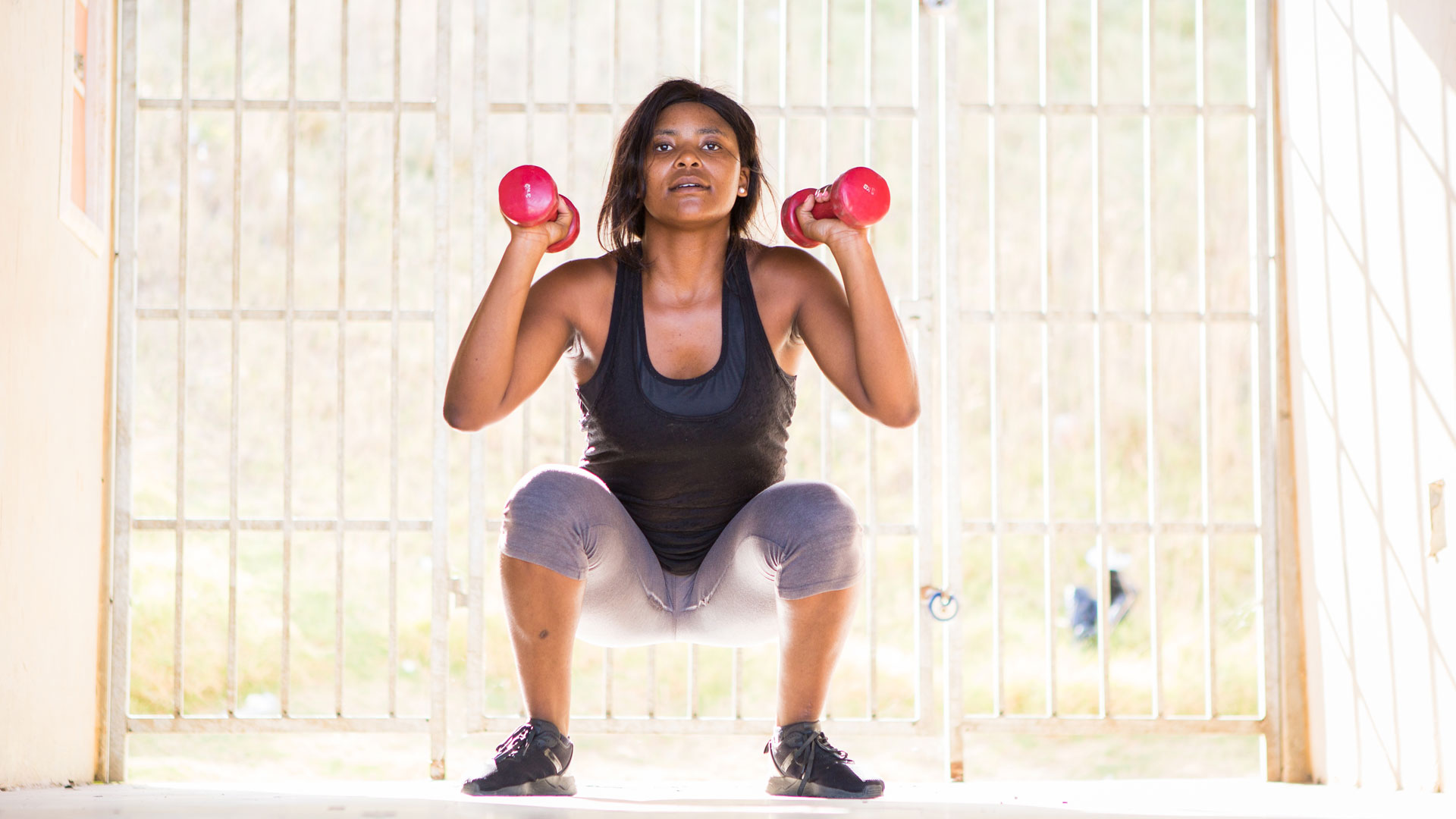Squat workout: get stronger with these exercises
This squat workout combines weighted and bodyweight exercises for maximum results


A squat workout will target the legs, lower back, and core muscles. Many of these muscles help power you through daily tasks such as walking, climbing stairs, bending, or carrying heavy loads. Squats can also help strengthen muscles and burn fat.
Adding squats to your workouts, especially with extra using the best adjustable dumbbells, can help boost your exercise performance, decrease your risk of injury, and keep you moving more efficiently throughout the day
Experts regard the squat as one of the most effective exercises for enhancing athletic performance. This is because squats are relatively easy for most people to perform, and for many types of squats, you don’t require any equipment.
There are many variations of squats, each of which offers different benefits. The right choice of squat variation will depend on your current level of ability and training goals. Keep reading to learn more about the rewards you can reap from squats and variations you can try for added benefits.
What are the benefits of squat workouts?
Personal trainer Paige Verity Davis explains why we should all be adding squats to our routine, “Squats are very beneficial as they are a great workout that can help assist you in growing stronger so you can achieve more in your daily life. Think about how often you’re picking things up off the floor - they all involve little squats! The more you squat, the more you can help reduce the likelihood of getting injured as it will strengthen your body, and it can also help with healing injuries if completed correctly.
“They are also a fantastic way to burn fat - you’re growing your muscles, and more muscles equal more fat burning! You can do squats anywhere, so whether you’re at home, trying to squeeze in a little workout in the ad breaks of a TV show, or at your local park, you can easily manage a quick squat workout.”
The squat can be easily scaled up or down by athletes of all abilities. Beginners and older exercisers can do half squats, mini squats, and air squats and work up to the full, weighted squat over time. Anyone can master it with the proper training and progression.
Start your week with achievable workout ideas, health tips and wellbeing advice in your inbox.
Squat workout: exercises to try out
Davis says, “With the squat variations detailed, you can start really small with low weights and smaller movements, or you can progress to higher weights and larger movements. Anyone can achieve squats; even the tiniest squat dip is a great place to start!”
Basic squat
Known as a bodyweight squat or an air squat, the most basic type of squat uses just your body weight for resistance.
To do a basic squat:
- Start with your feet slightly wider than hip-width apart.
- Keep your chest up, engage your abdominals, and shift your weight onto your heels as you push your hips back into a sitting position.
- Lower your hips until your thighs are parallel or almost parallel to the floor.
- You should feel the squat in your thighs and glutes.
- Pause with your knees over, but not beyond, your toes.
- Inhale when you squat down, exhale on the way up.
Sumo squat
This is like a standard squat but with the added weight of a dumbbell in front of your body.
Hold a light- to a medium-weight dumbbell in each hand at your shoulders or hips, or hold one heavier dumbbell with both hands while extending your arms long, letting the weight hang down in the center of your body.
Squat press

This follows the same movement as a standard squat; however, you hold dumbbells on your shoulders as you squat down and as you stand up, exhale, and push both dumbbells straight up above your head.
Pulsing squat
While doing the basic squat, you can add a pulse at the bottom to challenge your legs and your glutes a little bit more. Pulse down at the bottom of the movement three times before you return to the starting position.
Wall squat
A wall squat will provide extra support if you have knee or hip problems.
- Stand with your back against a wall and step your feet out about 12 inches from the wall.
- Bend your knees, dropping into a squat while keeping your back pinned to the wall throughout the movement.
- Stop when your thighs are parallel to the ground. Push up through your heels back to start.
Side squat
It’s important to work in all planes of motion while exercising — that means not only front and back but also side to side.
- Start with your feet shoulder-width apart and your arms down at your sides.
- Begin to hinge at the hips and bend your knees, stepping your right foot out to the side and allowing your arms to raise up in front of you to a comfortable position.
- When your thighs are parallel to the ground, stand up, stepping your left foot to meet your right.
- Repeat, stepping your left foot out and bringing your right foot to meet it.
Barbell back squat

Choose a weight that allows you to maintain good technique throughout all sets and repetitions.
- Perform barbell squats by standing with your feet shoulder-width apart.
- Take a deep breath and unrack a weighted barbell, holding it on your upper back.
- Keep your chest up and your back straight as you hinge your hips and knees to lower your body through a full range of motion into a squat position.
Bulgarian Split Squat
This single-leg variation forces you to engage your core. Complete this move by holding a dumbbell in each hand or loading a barbell on your back.
- Position yourself in front of a bench with a split stance, resting your left foot up on the bench. Your right foot should be far enough out to squat down without your knee falling over your toes comfortably.
- Keep your chest open, slowly lower yourself until your front thigh is almost horizontal, and keep your knee in line with your foot. Make sure that your knees don’t go over your toes and return to the upwards position.
- Stand up and perform on the other side.
Overhead squat

With a weight held above your head, an overhead squat requires more stability, mobility, and flexibility than a basic squat.
- Stand with your feet wider than shoulder-width apart; toes pointed out. Select a weight you can comfortably lift over your head with a wide grip.
- Keeping your chest and head up, sit back into your hips, letting your thighs go just past parallel to the ground.
- Keep your chest elevated and lift your body back up through your heels.
Catherine is a freelance journalist writing across titles such as Verywell Health, Healthline, The Daily Telegraph, Refinery29, Elle, and Vogue. She specializes in content covering health, fitness, wellness, and culture.
A once reluctant runner, Catherine has competed in 30 running events in the past five years and looks forward to one day running the London Marathon.
